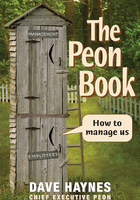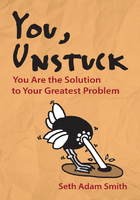What Is Consensus?
For the past fifteen years, most of my work as a consultant has been based on a single premise:
Real change does not come from decree, pressure, permission, or persuasion. It comes from people who are passionately and personally committed to a decision or direction they have helped to shape.
If you want to turn your organization's bystanders or cynics into owners, give them a meaningful voice in decisions that impact their work. When people are invited to come together to share their ideas, concerns, and needs, they become engaged. They move from being passive recipients of instructions to committed champions of decisions. This is the power of deciding together.
Consensus Defined
Consensus is a cooperative process in which all group members develop and agree to support a decision that is in the best interest of the whole. In consensus, the input of every member is carefully considered and there is a good faith effort to address all legitimate concerns.
Consensus has been achieved when every person involved in the decision can say: “I believe this is the best decision we can arrive at for the organization at this time, and I will support its implementation.”
What makes consensus such a powerful tool? Simply agreeing with a proposal is not true consensus. Consensus implies commitment to a decision. When group members commit to a decision, they oblige themselves to do their part in putting that decision into action.
Consensus is also a process of discovery in which people attempt to combine the collective wisdom of all participants into the best possible decision.
Consensus is not just another decision-making approach. It is not a unanimous decision in which all group members' personal preferences are satisfied. Consensus is also not a majority vote in which some larger segment of the group gets to make the decision. Majority voting casts some individuals as “winners” and others as “losers.” In consensus everyone wins because shared interests are served.
Finally, consensus is not a coercive or manipulative tactic to get members to conform to some preordained decision. The goal of consensus is not to appear participative. It is to be participative. When members submit to pressures or authority without really agreeing with a decision, the result is “false consensus” that ultimately leads to resentment, cynicism, and inaction.
Beliefs That Guide Consensus
Like any decision-making method, consensus is based on a number of important beliefs. Before using consensus, you must ask yourself and group members, “Are these beliefs consistent with who we are or who we aspire to be as an organization?”
There are four basic beliefs that guide any consensus-building process.
Cooperative Search for Solutions
Consensus is a collaborative search for common ground solutions rather than a competitive effort to convince others to adopt a particular position. This requires that group members feel committed to a common purpose. Group members must be willing to give up “ownership” of their ideas and allow those ideas to be refined as concerns and alternative perspectives are put on the table. Consensus groups are at their best when individual participants can state their perspectives effectively while not jealously guarding their position as the “only right solution.”
Disagreement as a Positive Force
Constructive, respectful disagreement is actively encouraged. Participants are expected to express different points of view, criticize ideas, and voice legitimate concerns to strengthen a proposal. In consensus, we use the tension created by our differences to move toward creative solutions—not toward compromise or mediocrity.
Every Voice Matters
Consensus seeks to balance power differences. Because consensus requires the support of every group member, individuals have a great deal of influence over decisions, regardless of their status or authority in the group.
In consensus, it is the responsibility of the group to make sure legitimate questions, concerns, and ideas get expressed and are fully considered, regardless of the source.
Decisions in the Interest of the Group
With influence comes responsibility. In consensus, decision makers agree to put aside their personal preferences to support the group's purpose, values, and goals. Individual concerns, preferences, and values can and should enter into the discourse, but in the end the decision must serve the collective interests.
It is possible for an individual group member to disagree with a particular decision but consent to support it because:
The group made a good faith effort to address all concerns raised.
The decision serves the group's current purpose, values, and interests.
The decision is one the individual can live with, though not his or her first choice.
Choosing the Right Decision-Making Approach
Using consensus for a particular decision is both a philosophical and pragmatic choice, generally made by formal leaders. Some leaders believe it is possible and desirable to use consensus for every decision (e.g., “we are a consensus organization”).
I believe that the appropriateness of consensus as a decision method is situational. Consensus is most successful when certain conditions are present. As a leader or facilitator of the decision process, it is your job to evaluate whether the right combination of conditions exists to support the approach.
Consensus may be the most logical and sensible approach when:
This is a high-stakes decision that, if made poorly, has the potential to fragment your team, project, department, organization, or community.
A solution will be impossible to implement without strong support and cooperation from those who must implement it.
No single individual in your organization or group possesses the authority to make the decision.
No single individual in your organization or group possesses the knowledge required to make the decision.
Constituents with a stake in the decision have very different perspectives that need to be brought together.
A creative, multidisciplinary solution is needed to address a complex problem.
On the flip side, consensus may not be the most logical approach when:
The decision is a fait accompli—that is, it has already been made, but there is a desire to create the appearance of participation.
Making the decision quickly is more important than including broad-based information and mobilizing support for implementation.
Individuals or groups who are essential to the quality of the decision or the credibility of the decision-making process are not available or refuse to participate.
The decision is simply not important enough to warrant the time and energy a consensus process involves.
Alternatives to Consensus
If your goal is to involve stakeholders in a decision, consensus is not the only approach available. Let's take a quick look at some other ways to make decisions in groups.
To help illustrate each of these approaches, here is a familiar scenario.
My wife, Linda, and I are going out to dinner with two other couples on Saturday evening. We all have idiosyncrasies and special needs with regard to what we will eat. We share a common purpose, which is to spend the evening together over an enjoyable meal.
Unanimous Voting
Every member of the group, without exception, gets his or her “first choice.” In other words, every member's individual preferences are met.
I suggest the local sushi restaurant, and every one of the other five people say sushi was their first choice as well. Everyone wins!
Pros: When individual members' interests match up perfectly with shared interests, there is no down side. Every member's needs get fully met, and therefore, every member is likely to feel completely committed to the decision.
Cons: Achieving true unanimity is a difficult, if not impossible, outcome to achieve for most decisions.
Majority Voting
Group members agree to adopt whatever decision most people (or some determined threshold percentage of the group) want to support.
When asked, four of the six friends want to eat Chinese food and two prefer Mexican food. The outvoted minority agrees to eat at the Chinese restaurant. I don't enjoy Chinese food but a vote's a vote. Plus, we need to make it to an 8:00 P.M. movie, so we don't have a lot of time to stand around and discuss where to eat.
Pros: Majority voting is particularly useful when the pressures to make a speedy decision outweigh the need to address all concerns or get full buy-in. A critical mass of support for some decisions is often adequate to ensure effective implementation.
Cons: The minority group often feels “robbed” and as a result, not highly committed to the final decision, especially if that same group finds itself frequently on the losing end of the vote. When this dynamic is set into motion, organizations run the risk of becoming fragmented because decisions lack support from an important, often vocal constituency.
At best, majority decisions produce the likelihood of creating some subgroup of uncommitted followers. At worst, these decisions can result in active resistance and even sabotage.
Some groups use majority voting as a back-up method in case consensus cannot be reached. I caution leaders against this because it undermines the spirit of consensus and reduces members' motivation to work toward common ground solutions (e.g., “If I hold a majority position, why should I work toward consensus if I know that the decision will eventually revert to a vote that I will win?”).
Compromise
Each group member gives up an important interest in order to reach a decision that partially meets everyone's needs. When compromise is used, nobody gets their first choice but everyone gets some of their needs met.
Three group members want Chinese food, one wants Middle Eastern food, and two prefer Mexican food. We decide to go to the Food Court at the local shopping mall. Everyone gets to eat their food preference, but nobody is satisfied with the flavor or the atmosphere.
Pros: Compromise can be more efficient than consensus. Every member gets some of what is needed and is willing to trade off other, less-important concerns or needs.
Cons: Compromise focuses on trade-offs rather than a creative search for some “third way” to meet the whole group's needs and concerns. Usually, nobody gets what they really want.
Deferring to an Individual Leader or Expert
An authorized group member makes a final decision either with or without consultation from others who have a stake in the decision. This method is sometimes used as a back-up approach if consensus cannot be reached.
Since it is Jim's birthday this week, we are letting him choose the restaurant. He takes a quick poll of the group, gets feedback on some ideas he has, and decides we are going to the local French restaurant.
Pros: An individual decision-making approach can be more efficient than consensus because the final decision involves fewer people. Deferring to an individual is particularly appropriate when the need for quick and decisive action overrides any desire for idea exploration or group buy-in. Using an expert authority is useful when there is a lack of experience or knowledge of the issue in your organization and the group is willing to defer to a knowledgeable individual. Finally, this approach can be used effectively on issues for which there are several good alternative solutions, all of which would be acceptable.
Cons: Individual decision makers may fail to consult with stakeholders who have relevant knowledge and ideas. They may miss out on important information that would create a better decision and more effective implementation. With hierarchical decisions, there is also a risk that people will not feel a sense of ownership of the solution they are charged with implementing.
Consensus
How might the restaurant decision be addressed through a consensus-based approach? Here is one possible scenario:
Four of the friends say they would like to eat Thai food. We discuss this preference and discover that they enjoy spicy food with curry. But my wife, Linda, is severely allergic to peanuts, and Thai restaurants tend to have a lot of peanuts in the kitchen. This is too risky for us. Someone suggests the local Korean BBQ restaurant, but Melissa rejects the idea. We ask her about her concerns and she states that she is a vegetarian. Jim suggests a new vegetarian Indian restaurant in town. This meets the needs of our “spicy curry friends” and also addresses both Linda's and Melissa's concerns.
Pros: Consensus most often produces high levels of commitment and accelerated implementation because most critical obstacles have been anticipated and all key stakeholders are on board.
Cons: The actual decision may take a bit longer to make, particularly when there are strongly held perspectives and group members are less experienced in using the method.
Common Misconceptions
Before they had a direct experience with consensus, many of my clients, especially corporations, were resistant to using this approach. They were worried about bogging down decisions that needed to be made quickly. They were also concerned that if consensus was used for some decisions, employees would expect to have a voice in every decision. Misconceptions about consensus abound, particularly in the world of business. Let's take a more systematic look at some common fears people have about consensus.
Consensus Takes Too Much Time
Speed is often an important factor in decision-making. In considering the issue of time, be sure to ask yourself whether you actually need to decide quickly or implement quickly.
A speedy decision made by an individual or through majority voting may be efficient, but it may also result in slower implementation due to resistance or unanticipated consequences. Many leaders who have used consensus would say, “Whatever time we lost during our decision-making phase, we gained in the implementation phase.”
There is no denying that consensus can take more time than other decision processes, but it does not need to be a burdensome process. With practice a well-planned process and skillful facilitation groups can move toward consensus decisions relatively quickly.
Solutions Will Become Watered Down
One concern about consensus is that resulting decisions are mediocre or uninspired because they have become watered down by compromises necessary to secure the support of every group member. An effective consensus process does not compromise on core criteria for decisions. It seeks to find solutions that fully achieve the group's criteria and goals while at the same time addressing individual members' concerns.
Individuals with Personal Agendas Will Hijack the Process
In any group process there is a possibility that a dysfunctional member or outside agitator may derail the decision process. Preestablished ground rules, strong facilitation, and a clear distinction between legitimate and nonlegitimate “blocks” of a decision are essential to prevent this from happening. As you will learn in later chapters, effective consensus processes offer people ways to “stand aside” when they have concerns but do not feel the need to hold up the decision.
Managers and Formal Leaders Will Lose Their Authority
Managers are often concerned that agreeing to a consensus process means they are giving up their ability to influence the final decision. They wonder, “Am I abdicating my role as a leader if I use consensus?” There is a difference between laissez-faire leadership, which often looks like abdication, and participative leadership, which requires the leader's full engagement. In consensus formal leaders are equal members of the decision group. Like any other member, they can stop a proposal if they do not feel comfortable with the solution. An alternative model using consensus involves the appropriate group of stakeholders making a consensus-based recommendation to management for final approval.
“Shared Ownership” Results in No Accountability
The concern is that no one will take responsibility for implementing a consensus-based decision because it is a group decision, not a personal decision. However, no group member is anonymous or invisible in consensus—quite the contrary. True consensus requires every participant to proclaim publicly not just his or her agreement with a proposal but full “ownership” of the decision.
Consensus in Action
Consensus can be used in a variety of environments and situations. The diversity of groups that can benefit from consensus is remarkable. Quakers have used consensus as a way of making decisions for more than three centuries. A wide range of organizations have adopted and modified consensus as a means of arriving at unified decisions, including contemporary organizations like Saturn Motor Corporation, the U.S. Army, and Levi Strauss & Co. Here are some real-life examples of consensus in action. These examples demonstrate that consensus can be effective in large companies, not-for-profit organizations, government agencies, and grassroots community meetings.
CREATING A STRATEGIC VISION
A leading toy maker brings together leaders from its offices in Los Angeles and Hong Kong to devise a long-range vision for success in a rapidly changing industry. There are no obvious paths toward the vision. The CEO is looking for the group's best thinking. The new vision will require significant changes in nearly every part of the company, along with a high level of commitment from the leaders in the room. The group uses consensus to make sure that all perspectives are heard and to confirm commitment from each team member.
DECIDING AS A BOARD
A member-owned, cooperatively run grocery store is governed by a board of directors. Members of the board, along with its subcommittees, are elected to represent different constituencies, including shoppers, employees, and store managers. To make policy and merchandising decisions that reflect the entire membership, these governing groups use consensus-based decision making. Consensus enables the co-op market to arrive at creative decisions that simultaneously satisfy financial, customer service, environmental, and social responsibility interests.
MOBILIZING SUPPORT FOR ORGANIZATIONAL CHANGE
A multinational automobile maker establishes twelve different cross-functional teams assigned to revitalize key areas of the company, ranging from brand identity to manufacturing quality. Teams include high-level executives, dealership owners, and frontline staff from throughout the company. Each group works with an outside facilitator to formulate recommendations to the National Advisory Board, which consists of company executives and franchise owners. Consensus-based recommendations result in swift approval and rapid implementation.
DEVELOPING PUBLIC POLICY
A governor formed a special task force charged with recommending a comprehensive housing strategy for the state's farm workers. Members of the task force included representatives of farmers, farm laborers, housing developers, and various government agencies. Several of these constituencies had a long history of conflict, but they came together because this was a unique opportunity to obtain significant funding from the legislature. The legislature made it clear that a recommendation supported by all of the constituencies would carry more weight than competing proposals from the various special interest groups. The consensus process not only enabled a solution that took into account the many important perspectives in the room, but also went a long way toward building trust among the various stakeholder representatives.
As you can see from these examples, consensus can succeed in diverse settings and situations. A crucial step in all these cases is careful consideration that consensus is the best way to make the decision. Let's move on now to the other building blocks that lay the groundwork for effective decision-making by consensus.














